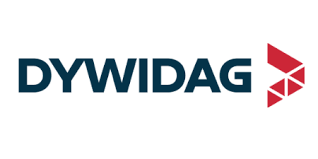Ai In Population Studies
Published Date: 15 December 2025 | Report Code: ai-in-population-studies
Ai In Population Studies Market Size, Share, Industry Trends and Forecast to 2033
This comprehensive report examines the evolving landscape and future potential of the AI in Population Studies market over the forecast period 2024 to 2033. It provides detailed insights into market size, growth rates, segmentation, regional performance, technological advancements, and strategic challenges, equipping stakeholders with actionable intelligence for informed decision-making.
| Metric | Value |
|---|---|
| Study Period | 2024 - 2033 |
| 2024 Market Size | $1.80 Billion |
| CAGR (2024-2033) | 7.3% |
| 2033 Market Size | $3.46 Billion |
| Top Companies | DataInsights Global, CensusTech Solutions |
| Last Modified Date | 15 December 2025 |
Ai In Population Studies (2024 - 2033)
Ai In Population Studies Market Overview
Customize Ai In Population Studies market research report
- ✔ Get in-depth analysis of Ai In Population Studies market size, growth, and forecasts.
- ✔ Understand Ai In Population Studies's regional dynamics and industry-specific trends.
- ✔ Identify potential applications, end-user demand, and growth segments in Ai In Population Studies
What is the Market Size & CAGR of Ai In Population Studies market in 2024?
Ai In Population Studies Industry Analysis
Ai In Population Studies Market Segmentation and Scope
Tell us your focus area and get a customized research report.
Ai In Population Studies Market Analysis Report by Region
Europe Ai In Population Studies:
Europe has demonstrated steady progress with market figures rising from 0.51 in 2024 to 0.98 by 2033. The region’s mature regulatory frameworks and extensive academic collaborations have created a conducive environment for AI adoption in population studies. Emphasis on data privacy and quality assurance further fortifies Europe’s strategic deployment of AI technologies.Asia Pacific Ai In Population Studies:
In the Asia Pacific region, the market has shown promising signs with a growth from a size of 0.35 in 2024 to 0.67 by 2033. This region benefits from rapid technological adoption, increasing digital infrastructure, and significant governmental support for research initiatives. The integration of AI in population studies is poised to enhance demographic research and public policy formulation in emerging economies.North America Ai In Population Studies:
North America remains one of the leading regions in AI-enhanced population studies. With market values increasing from 0.66 in 2024 to 1.27 by 2033, there is a strong focus on integrating advanced analytics with extensive data repositories. Strong R&D facilities, supportive government policies, and high research funding contribute to its leading position in deploying innovative AI solutions.South America Ai In Population Studies:
Latin America, serving as the proxy for South America in this study, has observed market advancements from a modest 0.15 in 2024 to 0.28 in 2033. Although the initial market penetration was limited, ongoing investments in digital transformation and data analytics are expected to drive further growth, particularly in urban demographic studies and health research.Middle East & Africa Ai In Population Studies:
The Middle East and Africa region, while starting with a lower baseline at 0.13 in 2024, is projected to grow to 0.26 by 2033. This growth is driven by increasing investments in digital infrastructure and a rising interest in harnessing AI for socio-demographic research. The region is gradually transforming its traditional research methodologies with modern AI-driven approaches, despite resource constraints.Tell us your focus area and get a customized research report.
Ai In Population Studies Market Analysis By Technology
Global AI in Population Studies, By Technology Market Analysis (2024 - 2033)
The technology segment is a critical driver in the AI in Population Studies market. This segment has experienced notable advancement in areas such as Data Privacy, Machine Learning, Natural Language Processing, and Computer Vision. For instance, machine learning has shown growth with market sizes increasing from 1.24 in 2024 to 2.37 in 2033, reflecting a stable share of 68.69%. Similarly, natural language processing and computer vision have contributed significantly to enhanced data processing and accurate analysis. These technologies are not only improving the predictive capacity of demographic studies but are also streamlining data collection and analysis protocols. As digital solutions evolve, the focus remains on building robust AI frameworks that ensure data security and operational efficiency. Innovations in these sub-segments are setting new benchmarks for technological integration in population research.
Ai In Population Studies Market Analysis By Application
Global AI in Population Studies, By Application Market Analysis (2024 - 2033)
The application segment of the market is reflective of the diverse areas where AI is being integrated to enhance population studies. Key applications include Census Analysis, Survey Research, Public Health, and Sociological Research. Notably, Census Analysis has experienced robust growth, with market size figures rising from 0.96 in 2024 to 1.84 by 2033, capturing a significant share of 53.2%. Survey research and public health applications have similarly benefitted from AI advancements, providing improved accuracy in data collection and interpretation. Furthermore, sociological research has also shown promise with consistent growth metrics. These applications signal that AI’s capacity for advanced analytics is transforming data-driven decision-making processes across various sectors, ultimately contributing to the development of more targeted and effective population policies.
Ai In Population Studies Market Analysis By Data Source
Global AI in Population Studies, By Data Source Market Analysis (2024 - 2033)
The data source segmentation highlights the critical distinction between structured and unstructured data used in population studies. Structured Data, which grew from 1.24 in 2024 to 2.37 by 2033, continues to be the backbone for traditional analytical models due to its ease of processing and reliability, holding a share of 68.69%. Conversely, Unstructured Data, while smaller in market size (0.49 in 2024 to 0.93 in 2033), accounts for a share of 27.03% and is increasingly vital for capturing complex, nuanced information that structured data might miss. Additionally, Big Data applications, although the smallest segment with a steady share of 4.28%, are critical for handling voluminous datasets. Together, these data sources enable comprehensive demographic insights and bolster the analytical strength of AI applications in population studies.
Ai In Population Studies Market Analysis By Methodology
Global AI in Population Studies, By Methodology Market Analysis (2024 - 2033)
Methodologically, the market is segmented into Statistical Methods, Predictive Analytics, and Descriptive Analytics, each providing a unique approach to data analysis in population studies. Statistical Methods, which have grown from a size of 1.24 in 2024 to 2.37 in 2033, dominate with a share of 68.69%, reflecting their importance in traditional analysis. Predictive Analytics, accounting for a 27.03% share, assists in forecasting future demographic trends, while Descriptive Analytics, though smaller at 4.28%, plays a crucial role in summarizing current data insights. This segmentation underscores the importance of varied analytical approaches in enhancing the overall accuracy and reliability of population studies, thereby enabling more informed policy-making and strategic planning.
Ai In Population Studies Market Analysis By Challenge
Global AI in Population Studies, By Challenge Market Analysis (2024 - 2033)
The challenge segment addresses critical issues that may impede the seamless integration of AI in population studies. Key challenges include integration issues and data handling complexities. Integration Issues have seen market sizes increase modestly from 0.08 in 2024 to 0.15 by 2033, maintaining a share of 4.28%. These challenges are compounded by regulatory requirements, concerns over data privacy, and the necessity for maintaining high data quality standards. Addressing these challenges involves continuous investments in technology, upskilling of the workforce, and implementing robust governance frameworks. Overcoming these obstacles is essential for unlocking the full potential of AI applications, ensuring that technological advances translate into sustainable growth and improved outcomes in population research.
Ai In Population Studies Market Trends and Future Forecast
Tell us your focus area and get a customized research report.
Global Market Leaders and Top Companies in Ai In Population Studies Industry
DataInsights Global:
DataInsights Global is recognized for its cutting-edge AI solutions in demographic research. The company has pioneered the integration of machine learning and big data analytics in population studies, delivering precise and actionable insights that drive policy decisions and research methodologies.CensusTech Solutions:
CensusTech Solutions leads the market with innovative tools that streamline census data collection and analysis. With a strong emphasis on data privacy and real-time analytics, the company continuously innovates, ensuring that public and private sector stakeholders can access reliable and timely demographic data.We're grateful to work with incredible clients.









FAQs
What is the market size of ai In Population Studies?
The AI in Population Studies market is projected to reach approximately $1.8 billion by 2033, growing at a CAGR of 7.3%. This growth reflects the increasing integration of AI technologies in demographic research and analysis processes.
What are the key market players or companies in this ai In Population Studies industry?
Key players in the AI in Population Studies sector include technology firms specializing in data analytics, healthcare organizations utilizing AI for research, and academic institutions leveraging AI for census analysis. Their innovations drive the sector forward.
What are the primary factors driving the growth in the ai In Population Studies industry?
Growth in the AI in Population Studies industry is driven by rising data generation, increased demand for accurate demographic insights, advancements in AI technologies, and the need for efficient population management strategies globally.
Which region is the fastest Growing in the ai In Population Studies?
Asia Pacific is the fastest-growing region in the AI in Population Studies market, expected to grow from $0.35 billion in 2024 to $0.67 billion by 2033, reflecting a strong uptick in regional investments and technological adoption.
Does ConsaInsights provide customized market report data for the ai In Population Studies industry?
Yes, ConsaInsights offers customized market report data tailored to the needs of stakeholders in the AI in Population Studies industry, ensuring relevant insights and analysis for strategic decision-making.
What deliverables can I expect from this ai In Population Studies market research project?
Deliverables from the AI in Population Studies market research project include comprehensive reports, market analysis, detailed forecasts, regional insights, competitive analysis, and actionable recommendations to support business strategies.
What are the market trends of ai In Population Studies?
Key trends in the AI in Population Studies market include the increasing adoption of machine learning techniques, growing concerns over data privacy, and a shift towards predictive analytics, driving enhanced demographic insights and research efficacy.
